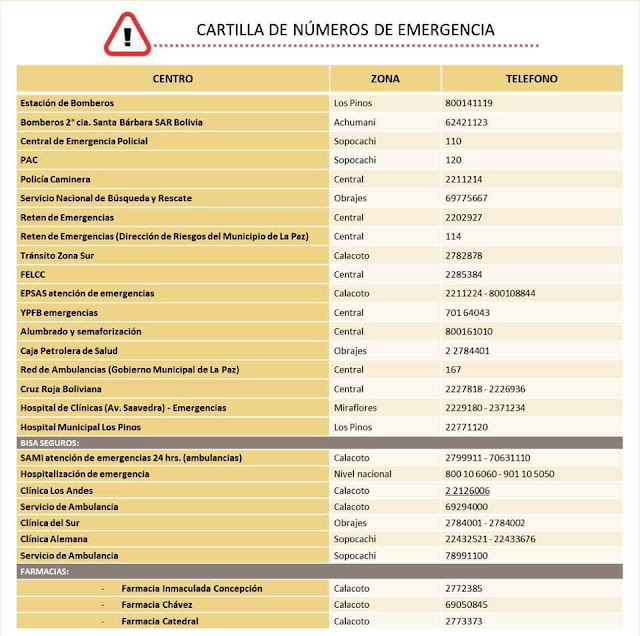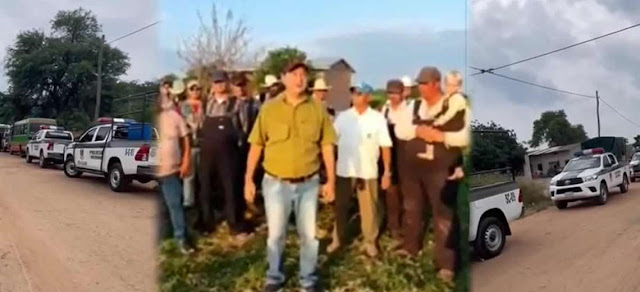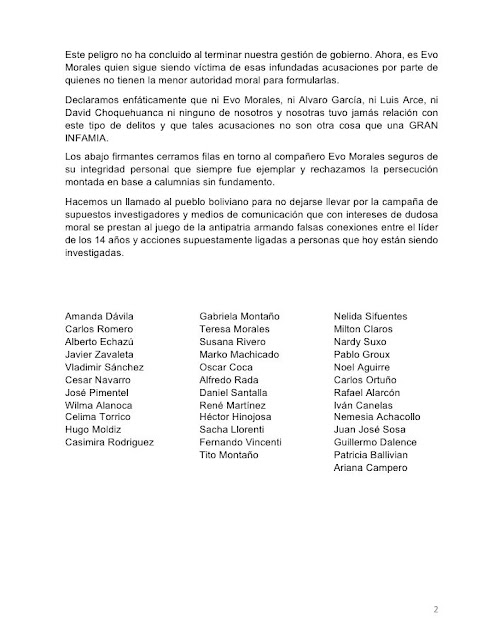Información útil
Artículos de interés mundial
Buscar
martes, abril 30, 2024
viernes, abril 12, 2024
Borrego, en máxima cacería
Pagan conservación con costosos permisos de cacería en Estados Unidos
RESERVA INDÍGENA ROCKY BOY, Montana Para la manada de borregos cimarrones, los acantilados rocosos eran un lugar seguro, con abundantes recovecos que se confunden con las rocas grises. Más abajo, el paisaje se desplegaba en un tablero liso de tierra ganadera que se extendía hacia el horizonte. La única amenaza aquí arriba sería para los corderos recién nacidos, susceptibles a que se los llevaran las águilas.
Agachado detrás de unas rocas la primavera del año pasado, Brendan Burns, de 38 años y con una creciente reputación como cazador de borregos y guía, se asomaba sobre la orilla. Los borregos cimarrones tienen sentidos agudos y cuando se asustan, se echan a correr. Pero los animales no se encontraban en casa. Entre el panorama a sus pies, Burns divisó un grupo de diminutos puntos en una pradera lejana. Los cuernos los delataban.
'Deporte de ricos'
Subastas para permisos
Cacería memorable
viernes, febrero 18, 2022
INRA now says Mennonite colony is legal and was 'victim' of land trafficking
The agrarian entity affirms that the colonists must move back more than 2,000 hectares because they occupy a property ceded to Iniaf and a community of which there are no records of activity. It gave 15 days for the Mennonites to vacate this space.
Contradictions arise that cast doubt on the real motives for the eviction of the Valle Verde Mennonite community, located in the locality of Quimome in the municipality of San José de Chiquitos. After describing this group as illegal and calling them foreigners, yesterday the National Institute of Agrarian Reform (INRA) assured that their settlement is legal, but that it exceeded its extension, so they will only have to move their colony to more than 2,000 hectares. In addition, it implied that the group was a victim of land trafficking and urged them to follow the corresponding legal measures.
However, the entity was categorical in stating that the community must abandon the disputed space that was granted as usufruct to the National Institute for Agricultural and Forestry Innovation (Iniaf) (860 hectares) and another part ceded to the 19 de Noviembre community with 1,400 hectares.
It is legal
In declarations to Bolivia TV, the national director of INRA, Eulogio Núñez, assured that the Mennonite colony is legal, but that it extended its limits over a fiscal property and that the solution to the conflict is to move its community.
"They simply have to move back a little bit to their colony, which is legal. What has happened is like an overflow of this colony, which suddenly also encroached on lands that were in usufruct of the Iniaf and of this community that is authorized," he remarked.
In another interview with Bolivia TV, the director of INRA in Santa Cruz, Adalberto Rojas, like Núñez, recognized that the Mennonite community is legal and that it has more than 7,000 hectares.
He assured that the eviction is from the occupied public lands and that they will not be left without land, because "nobody will take anything from them".
By means of a communiqué, yesterday the entity reiterated the measure and said that "there are pending tasks concerning inventories and removal that in a maximum period of 15 days must be concluded, according to the commitment subscribed by the occupants. These actions will be carried out under the supervision of INRA and police protection".
In addition, the entity assured that if some of the evicted Mennonites were victims of land trafficking, they must make the corresponding resignation.
"If the evicted Mennonites had been victims of land trafficking, they should go to the ordinary justice system for investigation and application of criminal sanctions, if appropriate," the entity assured in its statement.
It also assured that the 19 de Noviembre community has a Settlement Authorization Resolution issued on February 18, 2016.
However, the Mennonites' lawyer, Alejandro Altamirano, specified that INRA itself revoked this settlement.
"The same agrarian entity carried out an on-site inspection and found that the farmers did not work the land, so it totally annulled the settlement permit," he explained and maintained that
the expansion was not irregular, but in 2009 they bought the 2,000 hectare property called Guayacanes from a couple.
This couple even had documentation dating back to 1992, when Iniafa did not exist. So, he assured that the communities have all the documentation that supports the operation.
"This is a political issue and what is intended is to settle an intercultural community November 19. That is what is happening. The community has not been able to be evicted," he said.
He added that if what Núñez said was true, "the agrarian file should have been annulled". "Subsequently, the cancellation of the registry where the name of the legal representatives of the registry is registered in the Real Rights Registry should have been made".
36 former ministers say Evo is not a drug trafficker
"Hands to the fire".
POINT OF VIEW
Paul Coca
Political Analyst
"The one who explains gets complicated".
The 36 former ministers who signed the endorsement
jueves, febrero 17, 2022
Health plans to perform seven bone marrow transplants on children with cancer this year
According to estimates by Bolivian specialists, out of 100 children who could suffer from leukemia in the country, only five require or are candidates for transplants.
Seven bone marrow transplants are scheduled for this 2022 for the benefit of children suffering from cancer, announced Wednesday the Minister of Health, Jeyson Auza.
"On December 24, a bone marrow transplant treatment was performed on a 3-year-old boy, which was successful. We have three in the pipeline and we plan to perform seven hematopoietic progenitor transplants (bone marrow) for this year," announced the authority.
According to calculations made by Bolivian specialists, out of 100 children who could suffer from leukemia in the country, only five require or are candidates for transplants, which is why we will start with that number "in relation to autologous transplants".
Auza remarked that about Bs 39 million have been invested in infrastructure, equipment and highly qualified personnel.
"Our children will no longer have to travel abroad and they will not have to invest those 80 to 100,000 dollars, the treatment will be completely free for them", he added.
He emphasized that this is the beginning of a long way to go in order to solve the great problem of the advance of cancer in the country, which is why this service is now available free of charge for the entire population.
Bone marrow transplant or Hematopoietic Progenitor Cell Transplant (HPCT) is a widely accepted procedure for the treatment of congenital and acquired bone marrow diseases, solid tumors and metabolic alterations.
2019 crisis versions reach relator and Añez weakens
Ribera asked the jurist to visit her mother. The government reported that the former president's vital signs are within "normal parameters".
The versions about what happened at the end of 2019 yesterday dominated the second day of the visit of Diego García-Sayán, Special Rapporteur of the United Nations (UN) on the Independence of Judges and Lawyers. The representative met with authorities of the Departmental Court of Justice of La Paz (TDJ) and a letter from the former president Jeanine Añez to the jurist on the subject was made public.
García-Sayán held a meeting with representatives of the TDJ of La Paz, at its headquarters in downtown La Paz. In the meeting, according to information provided by this media, the representative had planned to learn about the so-called coup d'état case.
After the meeting, the TDJ of La Paz limited itself to disseminate photographs of the meeting through its social networks.
García-Sayán left the premises without making any statement to the press. A group of people from the Fejuve led by Jesús Vera held a demonstration in the vicinity of the judicial headquarters. When the UN rapporteur was on his way to a vehicle, they shouted "justice!".
Vera, in statements to the press, asked García-Sayán to receive them to know "the truth" of the neighbors of the city of La Paz about the crisis at the end of 2019. "When there has been the coup d'état by Mrs. Añez, in the city of La Paz, the first social organization that has been intervened in an irregular way and with paramilitary groups has been the Fejuve La Paz", indicated the leader.
Añez's defense, on the other hand, made public a letter from the former president addressed to the UN rapporteur, dated February 15, in which she informs him of "the public evidence of the flagrant interference of the political power and the Executive Branch in the Judicial Branch".
"In the official page of the Ministry of Justice, Minister Iván Lima Magne claims to have demonstrated that there was a coup in Bolivia, without there being to date any investigation framed in the Political Constitution of the State and in charge of the Maximum Supreme Court of Justice to assert such recklessness", reads the letter.
In the letter, Añez shows the "evidence" through four axes, which are: ordinary processes against a former President of the State, the interference of the Ministry of Justice, the interference of the Ministry of Government and the interference of the Attorney General's Office and the Executive.
In the case of the Ministries of Justice and Government, he cites at least eight declarations of authorities of those offices. Among those he mentions is the following: "In March 2021, the Minister of Justice, Iván Lima Magne, publicly confessed that 'because we did not have the 2/3 of the Assembly and we had to build a case, you could not go with such a serious accusation on day one...".
From Añez's Twitter account, it was reported that the former president would give García-Sayán 17 proofs of the interference of the Executive in the Judicial Branch and the Prosecutor's Office. However, the rapporteur did not visit her.
The exmandataria completed her eighth day of strike yesterday. "I feel weak, with headaches," she tweeted.
Her daughter, Carolina Ribera, asked García-Sayán to meet with the former president. "Let her have an audience with my mother, let her visit her here in the Miraflores prison so that she herself can tell her about all the injustices that have taken place in these months, all the trials and the fabricated crimes," she maintained.
Alain De Canedo, lawyer of the former president, said that Añez is weakening and regretted that nobody cares. "The former president is weak. Her life is running out, and nobody, absolutely nobody, cares. I really see with great impotence the indolence of the human being, especially of the Bolivian society, especially of the political class. This lady is dying and nobody cares".
The Penitentiary Regime, through a press release, indicated that Añez underwent three medical check-ups yesterday and that her vital signs are "within normal parameters".
García-Sayán also met with the presidents of the Senate and Deputies, Andrónico Rodríguez and Freddy Mamani, who gave him a plaque and a scarf. He also held a meeting with the presidents of the Justice and Constitution commissions of both chambers, all presided by MAS legislators.
The rapporteur was interested in the pre-selection of candidates for high positions in the Judiciary, said Deputy Juan José Jáuregui, president of the Constitution Commission.
miércoles, febrero 16, 2022
The Government of Potosí acquired another five vehicles in the "gray" market
The Governor's Office purchased five vehicles for the Police. They entered the country as 'reconditioned'. With this modality they paid less taxes
In addition to the 41 ambulances acquired with irregularities, the Governor's Office of Potosí purchased another five vehicles from Estefals Logistics. Unlike the first case, the units are in the country and were paid for.
However, in both cases, the seller of the vehicles went to the "gray" market through a supplier operating from Chile, according to information compiled by EL DEBER.
The vehicles arrived on December 28 and 30, 2021 at the Police Maintenance Center (Cemapol), according to the two delivery certificates signed within the terms established in two other contracts signed by Governor Jhonny Mamani, between November and December 2021. The contracting was direct and only this company participated in the bidding process.
These vehicles were registered on December 31 in the RUAT of the municipality of Potosí with license plates: 5691-YDF; 5680-IGH; 5680-IFE; 5680-IHL, and 5691-YCC.
In this system, the Governor's name appears as the legal representative of these assets, which are property of the Governor's Office.
The origin of these five vans is Thailand. They arrived in the country in October 2021 through the Industrial Free Trade Zone of Patacamaya with an "under-invoiced" price of US$ 25,000, less than what the Governor's Office paid for these goods. In addition, the vehicles paid a lower tax because they were treated as "reconditioned", according to their Single Import Declaration (DUI).
The manager of the Bolivian Automotive Chamber, Luis Encinas, explained that companies such as Logistics buy vehicles in "grey" markets and import them with an "under-invoiced price in Iquique (Chile)", lower than the real cost, in order to avoid taxes.
Contracts
The Governor's Office of Potosí signed four contracts with Estefals and Governor Jhonny Mamani announced that these would be annulled. However, in the case of the motorcycles for the Police, these were already delivered and have license plates with the proper registration before the RUAT.









